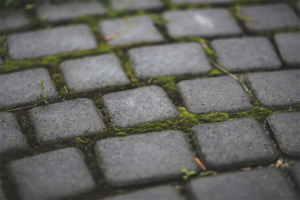
Paver Maintenance

SEALING
Pavers do not require sealing to maintain their structural integrity. However, some owners choose to apply a transparent sealer to: • enhance the color of the pavers • give them a wet or glossy appearance • prevent substances from penetrating the surface Pavers that are sealed are generally easier to keep clean than unsealed pavers, thus reducing cleaning costs. However, a sealer that is applied after the pavers are installed will generally need to be re-applied after two or three years. Applying sealers too often will create a milky haze. Some paver products are sold with sealers that are pre-applied in the factory.
CLEANING
A regular cleaning routine should be part of your maintenance plan, ranging from simply sweeping or blowing loose debris from the pavement surface to less frequent deep cleaning with cleaning products and/or water.
STEPS:
- Inspect the surface for cracked or broken units and replace as needed 2. Pull back or protect adjacent vegetation to protect from over-spray if using cleaning solutions 3. Wear protective clothing including goggles if using cleaning solutions 4. Spray water using a hose or power washer at an angle not greater than 30 degrees across the surface to minimize disturbance to jointing material 5. Thoroughly rinse cleaning solutions from the surface and channel to suitable drainage points 6. Inspect the area for integrity of joint material and replace as necessary.
WEEDS
The best strategy to prevent weeds is to keep paver joints full. When joints are not kept full, windblown seeds can become lodged in the joints and germinate. If this happens, weeds can be removed by hand, burned or managed with herbicides. Consider using biodegradable products that won’t damage adjacent vegetation or pollute water supplies. Preventative joint maintenance removes debris before it can be trapped in the joint material. The scale of the equipment used to remove debris will vary depending on the project size, age and product type. The larger the paver installation, the larger the equipment. For joints that are prone to erosion, consider reducing future maintenance costs by replacing the material with more technologically advanced polymeric sands, joint sealers or epoxy mortars that are less prone to erosion.
SURFACE STAINING CONCRETE EFFLORESCENCE
Efflorescence is a naturally occurring calcium salt that can sometimes appear on the surface of concrete and clay products. Efflorescence does not affect the structural integrity of concrete; it is a purely aesthetic issue that typically disappears with no further intervention after a season of rainfall. However, if desired, the process can be accelerated by washing the surface with an Efflorescence Remover. The chemistry of efflorescence; as cement interacts with water, calcium hydroxide is produced. This interacts with carbon dioxide in the atmosphere as the concrete dries, to produce calcium carbonate which appears through the pores of the concrete surface as a white residue. Repeated exposure to wetting and drying accelerates the wicking of this calcium carbonate to the surface.
STUBBORN STAINS AND GUM
For heavily soiled areas, and stubborn stains such as oil and gum, special stain removers or paver cleaning solutions can be used with a high-pressure washer or steam cleaner. Removers often work best when allowed to soak into the stain for 5-10 minutes before being washed, and a second application may be required. Remember to angle the pressure washer at 30 degrees to avoid damaging the paver or its joint material. Non-factory applied sealer may need to be reapplied after the cleaning is complete.
REMOVING RUST STAINS
Rust stains are caused by water running over oxidizing metal on the paver surface. When the metal object is not obvious, the cause may be metal shards left behind by plowing blades, or fertilizers containing ironite. Rust Remover cleaning solutions are available or in severe cases owners can choose to replace the stained paver.




